Virginia Beach offers strategic advantages for boat transport with its access to both the Atlantic Ocean and the Intracoastal Waterway. These waterways create efficient transportation routes for vessels of various sizes. Let’s explore the world of transporting boats to and from Virginia Beach.
Transport Options for Boats
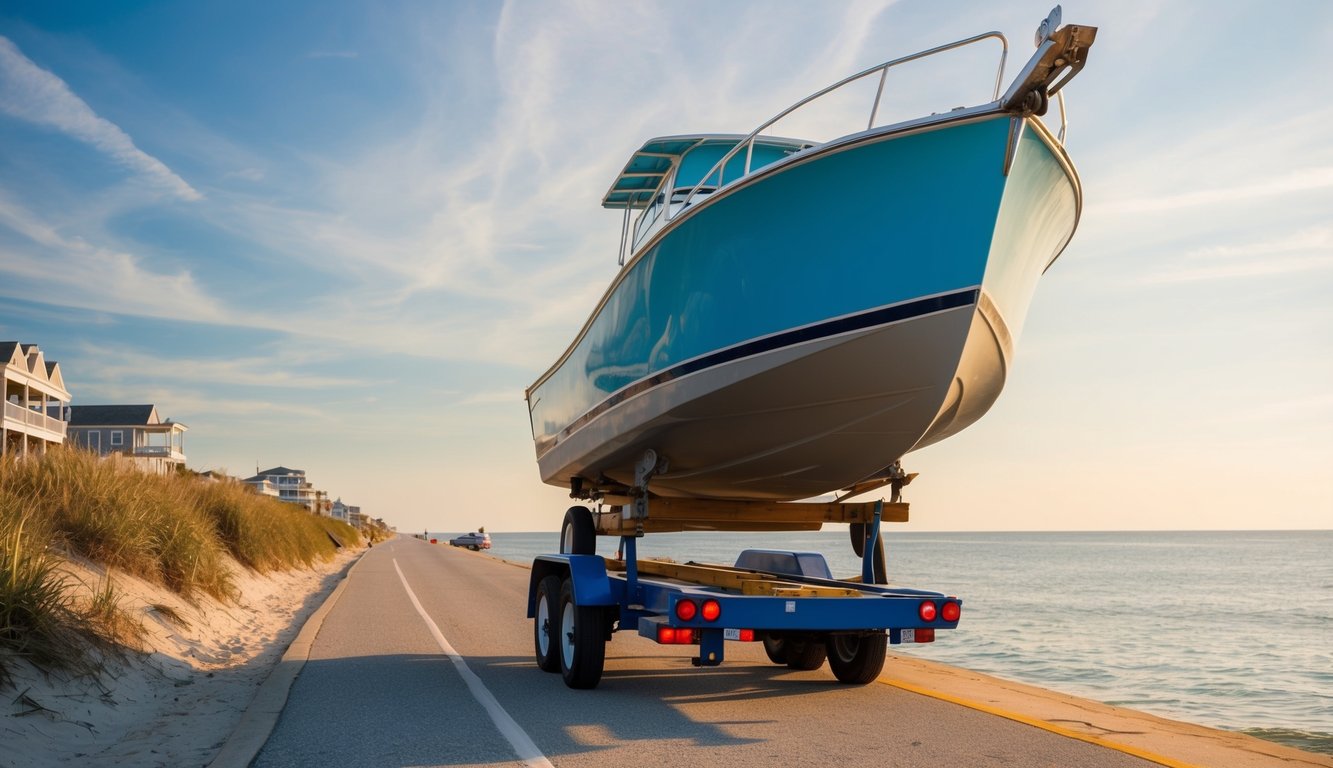
When moving your boat to or from Virginia Beach, you have several reliable options to consider. The right choice depends on your boat’s size, transport distance, and budget requirements.
Ground Transport Logistics
Ground transport is the most common method for moving boats in the Virginia Beach area. This process typically involves securing your vessel on a trailer or specialized cradle for safe transit. For smaller boats under 25 feet, standard trailers work well, while larger vessels require specialized equipment.
The transport route plays a crucial role in planning. Coastal routes around Virginia Beach offer good access, but inland destinations require careful planning for low bridges and narrow roads. For boats over 8’6″ wide, you’ll need oversize load permits. These permits have specific requirements and may restrict travel times to daylight hours only.
Professional transporters handle all these logistics, including:
- Proper boat securing and wrapping
- Route planning and permit acquisition
- Insurance coverage during transit
- Loading/unloading coordination
Choosing a Shipping Company
Finding the right shipping company for your boat transport needs is essential for peace of mind. Virginia Beach boat transport services range from large national carriers to specialized local operators. Look for companies with specific experience in your boat type. Some specialize in sailboats, while others focus on powerboats or yachts. Check their customer reviews and safety records before making a decision.
Request detailed quotes from multiple providers. Most companies offer free quote comparisons that can save you up to 75% on transport costs.
Key factors to consider when selecting a transport company:
- Insurance coverage – Verify the company carries adequate insurance
- Equipment quality – Ensure they use proper hydraulic trailers or specialized cradles
- Experience level – Look for companies with extensive boat transport experience
- Tracking options – Many now offer real-time tracking of your vessel
Ask potential transporters about their loading/unloading procedures and what preparations you’ll need to make before pickup.
Permit and Regulation Compliance
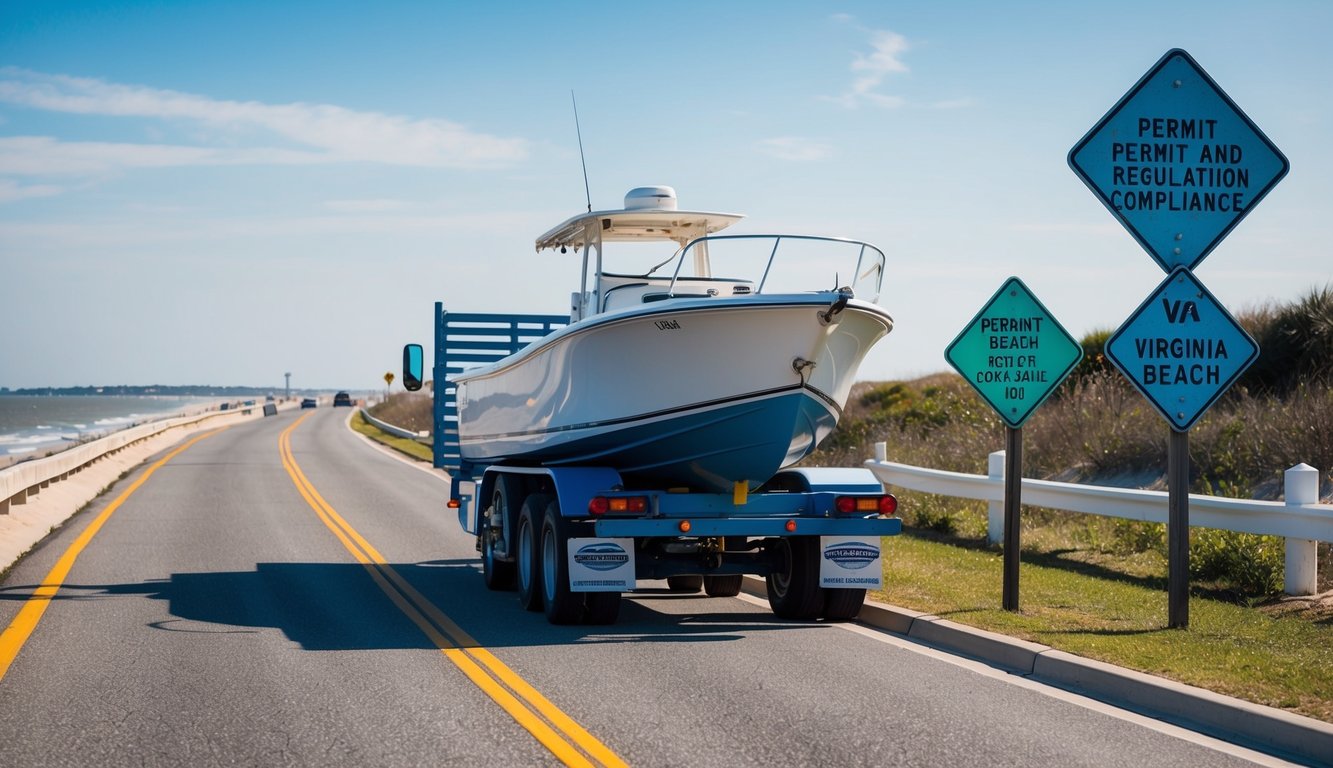
When transporting boats to or from Virginia Beach, proper compliance with permits and regulations is essential to avoid fines and ensure safe passage. Specific rules apply both on water and during ground transport.
Navigating US Coast Guard Regulations
- The US Coast Guard enforces strict regulations for boat transportation. Your vessel must display proper registration numbers if it’s motorized. These numbers need to be at least 3 inches high and contrast with the hull color.
- For boats being transported by trailer, you must secure all loose equipment. The Coast Guard recommends removing valuable electronics and securing hatches with tape or straps to prevent damage during transit.
- If your boat exceeds standard width limits (8.5 feet), you’ll need an oversized load permit. Boats wider than 12 feet require special routing and possibly escort vehicles according to Virginia transportation guidelines.
- The Coast Guard also requires that you drain all water from bilges and live wells before transport to prevent the spread of invasive species.
Environmental and Safety Standards
Virginia Beach has specific environmental regulations regarding boat launches and transport. You cannot launch motorboats or personal watercraft in certain protected beach areas. These restrictions help preserve delicate coastal ecosystems.
For ground transport, you must secure all potential contaminants. This includes:
- Properly storing fuel tanks
- Securing battery connections
- Containing any oil or lubricants
Safety standards mandate proper tie-down procedures using rated straps or chains. Your boat must not extend more than 4 feet beyond the trailer without a special permit and red flag marking. When transporting to Norfolk’s Reservoirs, you’ll need to purchase specific boat permits, even for non-motorized vessels like canoes and kayaks. These permits help maintain water quality standards in drinking water sources.
Preparation for Transport
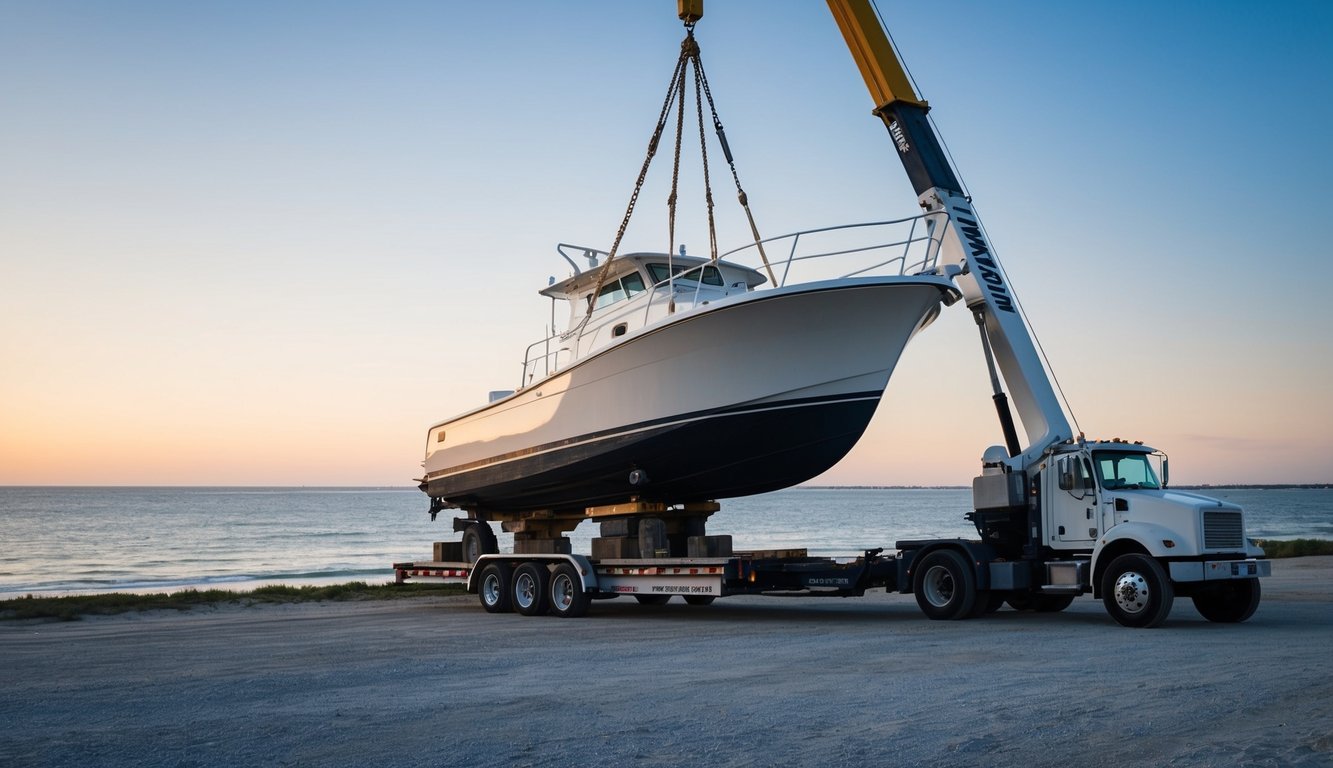
Proper boat preparation is crucial for safe and damage-free transportation from or to Virginia Beach. Taking time to prepare your vessel correctly protects your investment and helps avoid delays or complications during transit.
Securing the Vessel for Overland Transport
- Remove all personal belongings, electronics, and valuables from your boat before transport. These items can shift during transit and cause damage or get lost.
- Disconnect and secure all batteries to prevent electrical issues. Drain fuel tanks to about 1/4 full to reduce weight while leaving enough for testing upon arrival.
- Secure or remove all loose items, including antennas, flags, canvas covers, and electronics. Bind all cabins and spreaders to poles if transporting a sailboat with the mast unstepped.
- Wrap and pad delicate components like windshields, railings, and navigation equipment. Use high-quality marine tape that won’t damage surfaces.
- Lock all doors, hatches, and windows. Consider using additional strapping or padding for extra protection during the journey through Virginia’s varied terrain.
Documentation and Inspection
- Prepare a detailed inventory list of your boat’s condition before transport. Take clear photos from multiple angles to document the pre-transport state of your vessel.
- Gather all necessary ownership documents, including registration, title, and insurance papers. Transportation companies may require permits for oversized loads, which you should verify in advance.
- Schedule a pre-transport inspection with your chosen carrier. This helps identify any existing issues and ensures both parties agree on the vessel’s condition.
- Check that your insurance covers transport-related incidents. Many boat policies don’t include coverage during overland transport, so temporary transit insurance might be necessary.
- Obtain written confirmation of pickup and delivery dates, especially if coordinating with marina access in Virginia Beach.
Navigational Challenges and Solutions
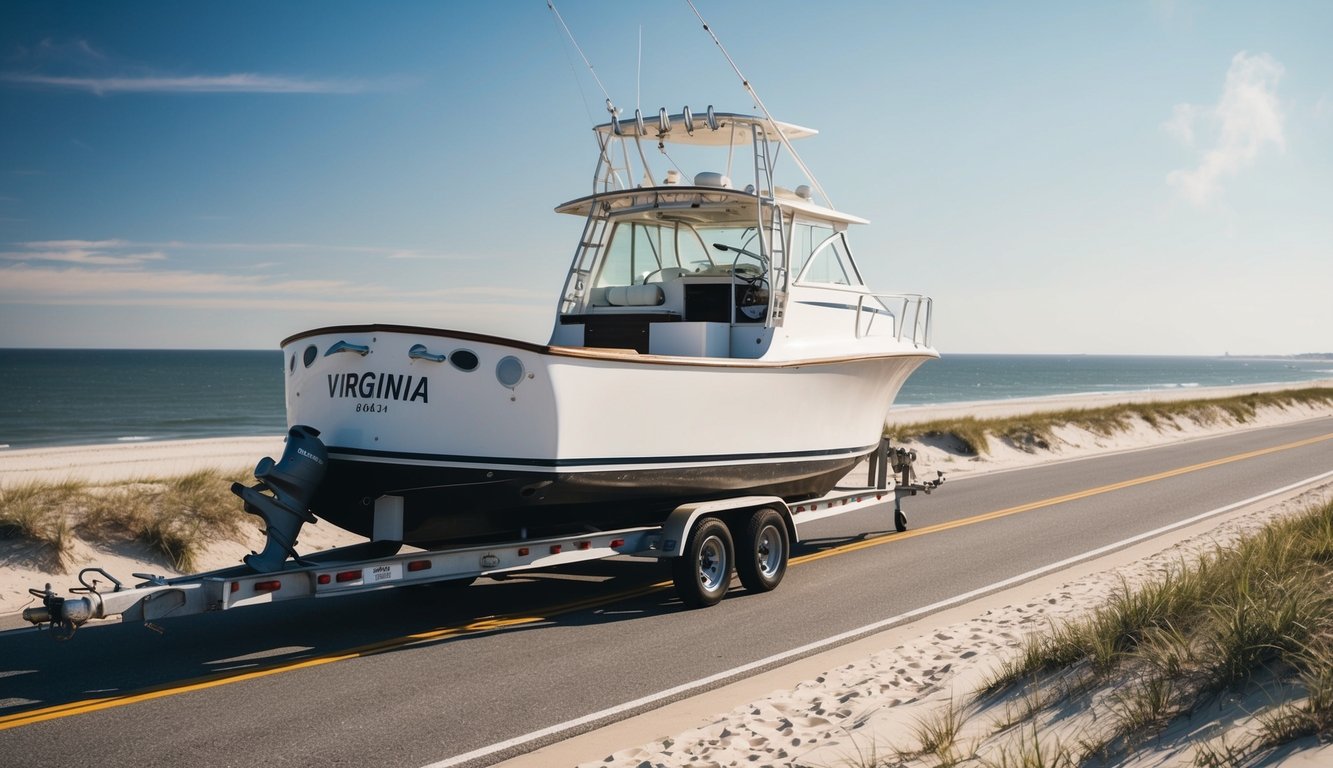
Transporting boats through Virginia’s coastal waters requires careful navigation and knowledge of local waterways. The unique geography of the region presents specific challenges that transporters must overcome with proper equipment and preparation.
Dealing with Hampton Roads and Chesapeake Bay
- Hampton Roads presents complex navigational challenges for boat transporters. This busy harbor area handles significant commercial traffic, requiring you to stay alert and follow established shipping channels. The Virginia ports compete with others along the Atlantic coast, making the waterways crowded with large vessels.
- Water depth variations can catch inexperienced navigators off guard. Tide changes significantly affect passable areas, especially for vessels with deeper drafts. You should always carry updated charts and monitor tide schedules.
- Strong currents where rivers meet the bay create another hazard. These forces can push vessels off course, particularly during spring runoff periods. Professional transporters plan their routes accounting for these conditions.
- Bridge clearances across Hampton Roads require careful planning. Know your vessel’s height requirements before attempting passage under any fixed bridge structure.
Aids to Navigation in Coastal Waters
- Proper navigation tools are essential for safe coastal transport. The U.S. Coast Guard maintains an extensive system of navigation aids throughout Virginia’s coastal waters that you must understand.
- Buoys and markers follow standard international systems with red and green indicators showing channel boundaries. Always keep “red right returning” in mind when coming back to port from the Atlantic.
- AIS (Automatic Identification System) technology helps prevent collisions in busy shipping lanes. This system broadcasts your vessel’s position and receives data from nearby ships, providing crucial awareness in limited visibility conditions.
- Quality binoculars are indispensable for spotting distant navigational aids and identifying potential hazards. Look for marine-specific models with image stabilization for the clearest views.
- Boat wakes can cause erosion and navigation hazards in narrow channels. Maintain appropriate speeds, especially near shorelines and in restricted waterways.
Local Ports and Waterway Access Points
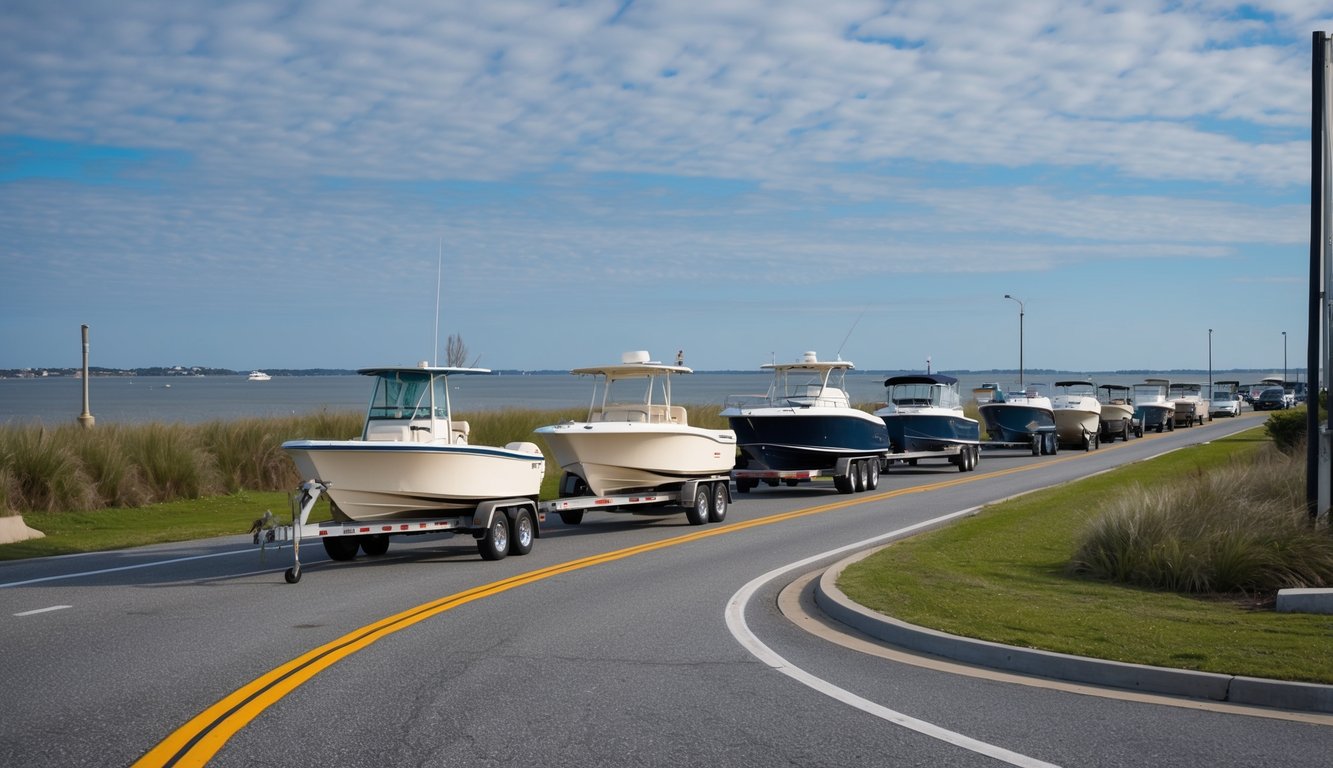
Virginia Beach and its surrounding areas offer numerous options for boaters looking to launch or dock their vessels. These facilities range from public access points to full-service marinas that cater to various watercraft sizes.
Overview of Access Points in Virginia Beach Area
- Virginia Beach Parks & Recreation maintains several waterway access sites throughout the city. These public launch points provide convenient entry to local waterways for smaller vessels. One example is located at 375 Challedon Drive, where street parking is available for your vehicle while you transport your canoe or kayak to the water.
- For larger vessels, Norfolk serves as a major maritime hub. The port of Norfolk is a key destination for yacht transport services and commercial shipping. When moving boats to or from Virginia Beach, you’ll likely interact with Norfolk’s facilities.
- Newport News offers additional port options, particularly for commercial vessels. These facilities provide important connections to the broader Chesapeake Bay area and Atlantic Ocean.
Facilities and Services Offered by Regional Marinas
- Regional marinas provide comprehensive services beyond simple boat launching. Many offer secure storage options, maintenance facilities, and fueling stations. These full-service marinas can be crucial when preparing your boat for transport.
- The Port of Richmond, while further inland, boasts being the “westernmost commercial maritime port on the North Atlantic coast” with quick access to I-95. This makes it a strategic location for connecting boat transport to major highway routes.
- Craney Island Marine Terminal provides specialized services for larger vessels. Its deep-water facilities accommodate commercial ships and can serve as a transition point for boat transport companies handling yacht deliveries.
- When choosing a marina, consider what amenities you need: repair services, temporary docking, or secure storage. Many marinas can connect you with boat transport services offering competitive rates for moving your vessel.



